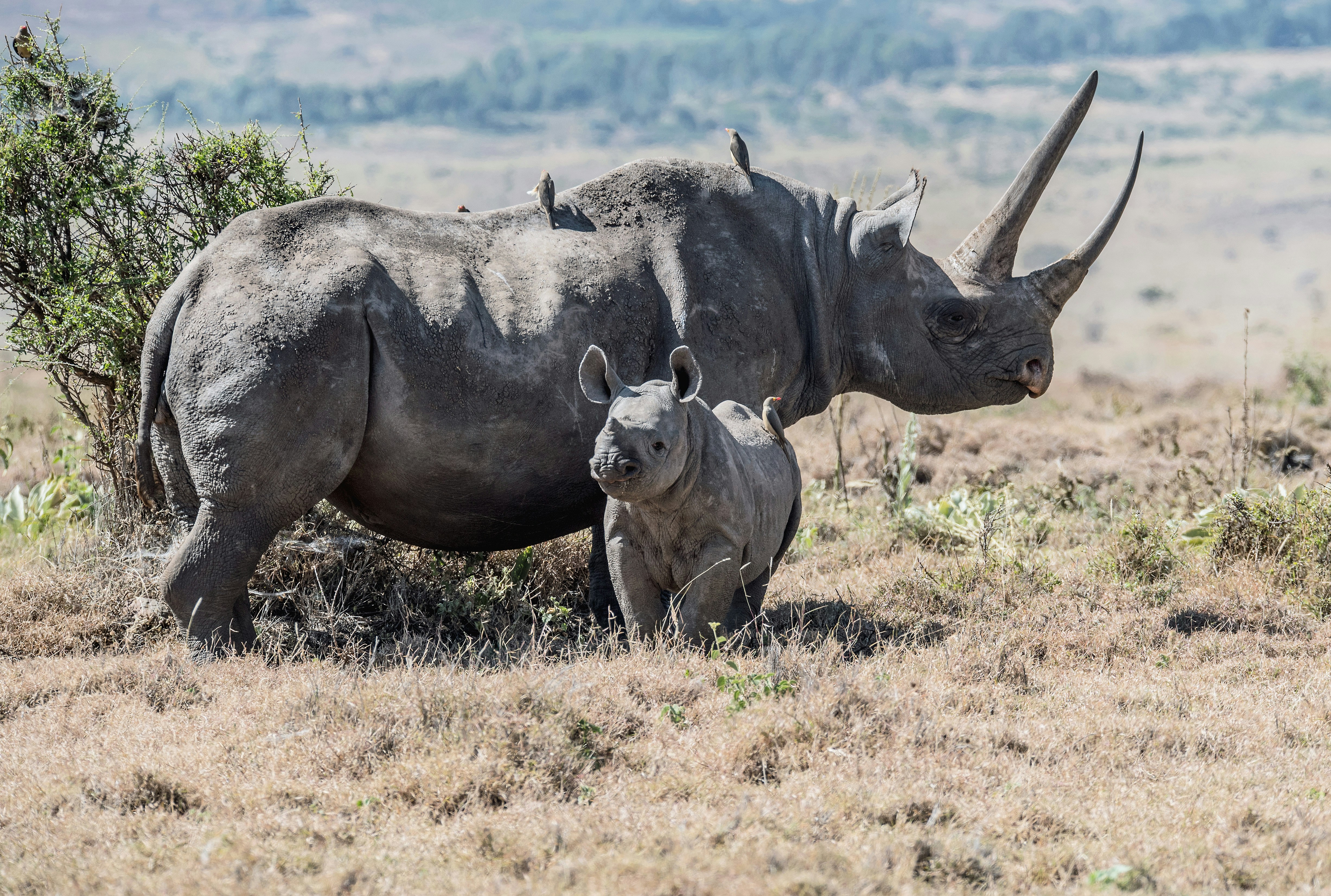Black Rhinos on the Brink

Category: Endangered Species | June 17, 2025
The black rhinoceros (Diceros bicornis), one of Africa’s most iconic megafauna, is facing a dire future. Once roaming vast areas across southern and eastern Africa, black rhinos have seen their numbers plummet by over 95% in the last century. Today, fewer than 5,500 individuals remain, placing the species firmly in the "critically endangered" category.
The primary threat to black rhinos is poaching, driven by demand for rhino horn in illegal wildlife markets, particularly in parts of Asia. Rhino horns, composed of keratin (the same protein found in human hair and nails), are falsely believed to have medicinal properties or serve as status symbols. Despite international bans and intensified crackdowns, black market trade continues to endanger rhino populations.
Habitat loss also plays a major role. As human populations expand, rhinos lose grazing lands and migratory routes. Agricultural development, mining, and infrastructure projects fragment their habitats, isolating populations and making breeding more difficult.
Unlike their white rhino cousins, black rhinos are solitary and more aggressive, known for their distinct hooked upper lips, which they use to browse shrubs and small trees. Their behavior and diet make them essential players in maintaining the ecological balance of savannah and bushland ecosystems.
Conservationists are fighting to save them. Anti-poaching patrols, dehorning strategies, translocation efforts, and community engagement programs have all helped slow the decline. Organizations also work to boost rhino populations through carefully monitored breeding programs and protected reserves.
Yet challenges remain. Rhinos require vast territories, secure habitats, and long-term political commitment. Poaching syndicates are sophisticated and often outpace enforcement. Additionally, climate change poses a new threat by altering water and food availability in their native ranges.
The story of the black rhino is both a warning and a rallying cry. While their numbers remain critically low, successful efforts in countries like Namibia and Kenya show that recovery is possible with the right resources and willpower. Saving the black rhino is not just about preserving a species—it’s about defending biodiversity, ecological health, and our responsibility as stewards of the planet.
🌴 Jungle Chatter
Most popular reactions:
No reactions yet.